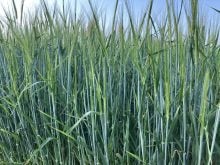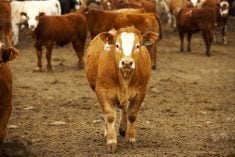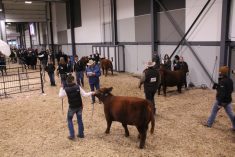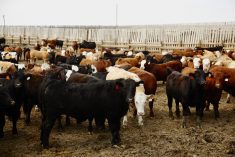Fed cattle
A drop in wholesale prices — in particular the choice cutout value — has in part pressured fed cattle prices lower. Beef demand concerns were evident as we started the new year as retail beef prices are high and cost of living for consumers continues to increase. Since the start of 2024, the volumes of fed cattle sold on the cash market have been light and will continue to be smaller as a larger percentage of the first-quarter supply is already booked as contract cattle.
Current cash cattle are looking at longer lift times, as mid-January pickup dates are stretching out as far as mid-March. These longer lift times will continue to weigh heavily on the already large carcass weights. The first week of January recorded an average steer carcass weight of 984 lbs., which is record high and 47 lbs. larger than the same week in 2023. By mid-January, the Alberta fed steer average was $218.75/ cwt, down from the last trading weeks of 2023, but still $32.40/cwt higher than the same week in January 2023 and $55.68/cwt higher than the five-year average. While prices are higher, so are break-evens and feedlots are operating with negative margins. Preliminary data to the end of 2023 reported fed steer slaughter down eight per cent at 1,652,438 head while fed heifer kill was four per cent smaller at 968,989 head. Fed cattle live exports, including cows to the end of 2023, were unchanged from a year ago at 502,171 head.
Read Also
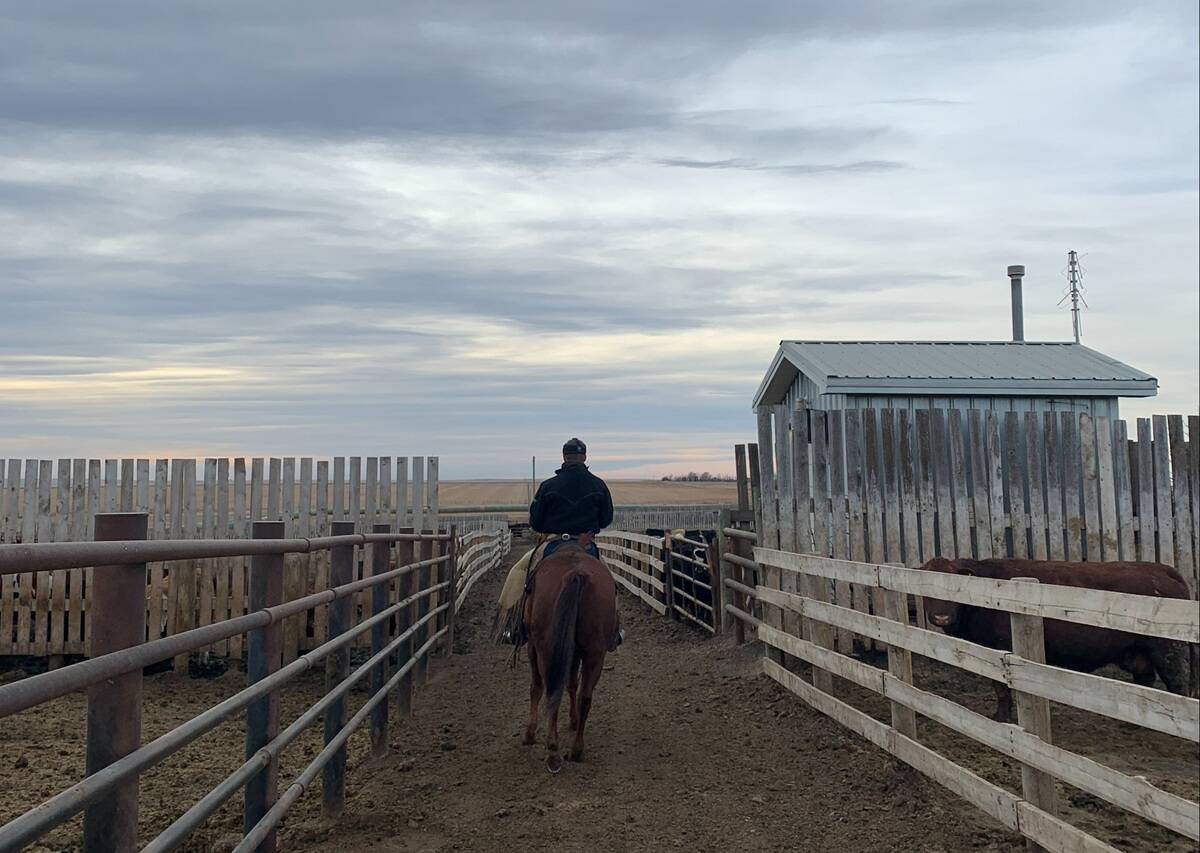
Pen riders still better than tech at detecting respiratory disease in feedlot cattle, says researcher
Recent research found that pen riders are better than tech at flagging signs of BRD in feedlot cattle
Deb’s outlook for fed cattle: Larger, longer-fed cattle need to work their way through the system. Until the supply becomes more current the fed cash market will remain under pressure. Concerns about the effects of inflation, retail prices, consumer spending and beef demand will continue in the near term. Fed cattle prices will likely continue to struggle through the first quarter of 2024.
Feeder cattle
The feeder market continues to be strong at the start of 2024. Limited trade in the first part of January due to extremely cold temperatures across the Prairies has been met by eager buyers, particularly on large packages of top-quality cattle. Even with negative feeding margins, 550-lb. feeder calves averaged $379.54/cwt, which was a $2.10/cwt improvement from the last trad- ing week of 2023. When compared with a year ago, the light volumes in mid-January averaged $79/cwt higher.
Decreasing feed grain costs no doubt helped support the heavier feeder calves at the start of the year. Feed barley prices were 26 per cent lower than a year earlier and down 29 per cent from January 2022, while Omaha corn was 35 per cent under year-ago prices. The 850-lb. feeder steer price in the second week of January in Alberta was $296.16/cwt, which was just $0.54/cwt higher than the last trading week in December but was $54/cwt higher than the same week in 2023. After a month of positive feeder basis levels in December, the basis in mid-January slipped back to -$6.95/cwt. Feeder exports in 2023 ended down 11 per cent from 2022 at 175,910 head.
Deb’s outlook for feeder cattle: Interest for grass cattle over the next couple of months will be strong. However, to what extent this will improve prices will depend on moisture this winter and early spring. Forage supplies are tight, and pastures were grazed hard last year but improved conditions will quickly spur on buyer competition. Heavier feeders generally experience price pressure through the start of a new year. However, lower cost of gain may help support the larger weight classes in the coming weeks. Ultimately, a close eye needs to be kept on the fed market as compounded feedlot losses would affect the feeder cattle market.
Non-fed cattle
Cow slaughter in 2023 was seven per cent larger than in 2022. A total of 503,001 head were reported by packing plants through- out the year. Bull slaughter was also larger in 2023, up 28 per cent to 20,143 head.
Cow prices have been under pressure since the summer of 2023. The start of the new year was nearly $7/cwt lower than the last trading week in December. At $121.65/cwt, the D1,2 cow prices are still at record levels for January trade. Mid-January 2023 saw the average D1,2 cow price at $98.79/cwt while the five- year average was $83.95/cwt. Additional tonnage from large fed steer and heifer carcasses coupled with sluggish beef demand have kept cull cattle from experiencing the rally typically seen at the start of a new year. Butcher bull prices, also under pressure, were down $4.43/cwt since the last trading week in 2023 to a mid-January average of $142.07/cwt.
Deb’s outlook for non-fed cattle: While culling rates were high through the fall of 2023, the overall culling rate in Canada has not changed much in the last couple of years. Alternative feed sources in some cases have producers trying to hold on to cows in hopes of a wet spring, good summer pasture conditions and strong calf prices in the fall. For consumers, the increase in the cost of living will often turn middle meat sales into lower-priced grinding meats and trim products. This in turn should continue to support cull cattle prices. Once the larger fed cattle move through the system and the front-end supply is more current, the non-fed market should follow its seasonal trend higher into the second quarter of 2024.
Signing off
On a personal note, this will be my last column for Canadian Cattlemen magazine. I have enjoyed writing the monthly market update for the past 15 years, but it is time to move on to new challenges. In addition to ranching with my husband and kids in Hanna, Alta., I will continue to work within the industry on new contract jobs and consulting projects that come my way. Thank you for reading this column over the years.



